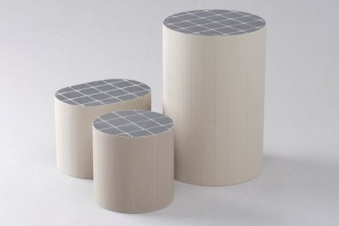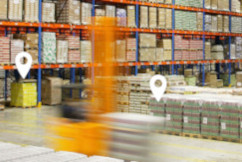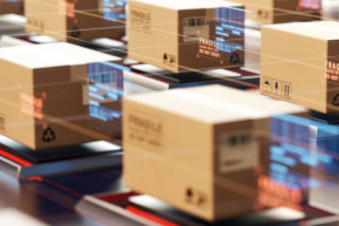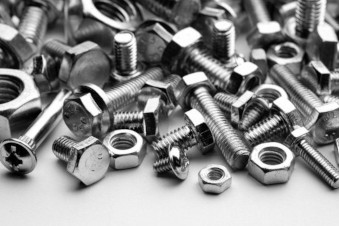Introduction
Steel mills play a crucial role in the economic-production context.
The steel sector, however, is as important as it is complex. Indeed, steel mills are difficult environments due to
the sophisticated industrial processes they must necessarily use. Effectively managing these complexities requires
technical expertise, attention to safety and a strong commitment to environmental sustainability.
A technological aid to support the improvement of logistical processes, the increase in quality and the increase in safety
at work, for steel mills and companies operating in the steel supply chain, can be provided by
Real-Time Locating Systems,
that allow to monitor and track in real time the position of objects, people or vehicles inside of the operating
environment.
We illustrate in this article why it is so important to make the steel industry more efficient and how this can
be done thanks to the adoption of RTLS technologies.
The essential role of steel mills in the production network
As mentioned above, steelworks play a fundamental role in the economic-production context,
for various reasons. In fact, steel is a fundamental material for industry, being one of the most used materials in the
manufacturing and construction sectors. It is used for
the production of automobiles, ships, aircraft, household appliances, industrial equipment, bridges, buildings, etc.
Additionally, the steel industry supports a wide range of related industries, such as mining, logistics, engineering, and more.
The global steel market size reached $907 billion in 2022. IMARC Group predicted that the market will reach $1,077
billion by 2028, showing a growth rate (CAGR) of 2.8% in period 2023-2028. This growth is attributable to the
growing use of steel in military, aerospace and naval applications, the growing demand for household appliances,
and the growing adoption of the raw material in numerous consumer goods.
The steel supply chain is also important for generating jobs. In fact, steelworks need specialized personnel to manage the production, maintenance and logistics processes within the plants. Finally, steel mills have a fundamental role when it comes to sustainability and recycling: many of these companies, in addition to producing steel from iron ore, use recycled steel scrap as raw material. This reduces dependence on natural resources and environmental impact.
Let's see below some solutions that could be suitable for complex contexts such as those of the steel mills.
Steel industry: improving efficiency thanks to RTLS
Considering the importance of steel mills for
the economy and for
the production chain, and at the same time considering the complexity of the activities and processes that distinguish
this sector, it is necessary to make all the activities inherent to the steel industry as efficient as possible, for
example by adopting RTLS systems.
It must be said that steelworks are not easy environments to deal with in terms of technological integration, this is
due to various reasons, linked primarily to the raw material treated (iron - including its alloys - is highly conductive,
and this leads to attenuation and reflection phenomena of radio signals), and also to the complexity of the production environment that characterize
them.
However, these difficulties can be overcome. We describe below some solutions that could be adopted in difficult
contexts such as those of steelworks.
RTLS in steel mills, what are the advantages?
The adoption of RTLS systems within steelworks brings significant advantages, in terms of increasing the quality of finished products, real-time control of the production process, automated management of stock positions, and increased safety.
First of all, the possibility of accessing real-time position data and the status of resources moving within the steel plant provides constant visibility of production and movement activities. This level of transparency allows for effective and efficient management of the production environment, giving steel industries the opportunity to promptly identify any inefficiencies or problems and make immediate corrections. Responding quickly to logistics or supply issues can avoid costly production delays and ensure operations proceed correctly.
Another aspect of fundamental importance is the safety and health of steel mills workers. These structures are complex and potentially dangerous environments, where interference situations can arise between people and vehicles or machinery. Thanks to the adoption of RTLS solutions, it is possible to monitor in real time and prevent any risk conditions for worker safety. RTLS also contribute to the tracking of lone workers, whose location and status can be monitored in real time. Finally, in evacuation or rescue situations, the RTLS system can help quickly locate the people involved, allowing for more coordinated and timely management of rescue operations.
The effectiveness of an RTLS system also translates into a reduction in operating costs within the
steelworks. Accurately tracking assets, including raw materials and equipment, helps reduce reduce search times
and prevent loss or theft.
Traceability also helps to optimize the use of resources
and allows for an improvement in operational processes, reducing downtime and increasing production
performance.
RTLS technologies for steel mills
It should be noted that steelworks are not easy environments for the integration of RTLS systems. First of all, to the raw material treated (iron and its alloys, steel, ...): the metal causes reflection and refraction phenomena of radio waves, which can have a significant impact on the performance of the wireless technologies underlying RTLS. Another aspect is linked to the complexity of the production environment, characterized by large areas, often heterogeneous infrastructures, indoor and outdoor areas, presence of large machinery, moving vehicles, etc... However, these difficulties can be overcome and resolved with the adoption of appropriate technological solutions. Below we see some solutions that could be adopted in difficult contexts such as those of steelworks.
A first need that typically arises in steel mills specialized in the processing of steel scrap is the need to precisely identify the raw materials that are taken, in predefined percentages, for the creation of steel production mixtures. For the purposes of automatic production and quality control, it is necessary to monitor and certify that a certain production batch of a specific type of steel has been made with the correct raw materials, in the right proportion. This can be verified by promptly monitoring the position of the means of picking up materials during loading operations. For the same purpose, it is necessary to automatically verify that the incoming raw materials, consisting of ferroalloys and steel scrap, are deposited in the correct areas, preventing any human errors.
A similar need arises for the management of the warehouse, where the semi-finished products (bars, spools of wire, ...)
coming out of production are stored. In this case, the objective is mainly linked to the needs of real-time control of
warehouse stocks and the reduction of search times.
A tracking system for the production and warehouse processes
described above requires the adoption of RTLS technologies capable of guaranteeing adequate performance. In the case
of controlling the processes of unloading and loading raw materials, an accuracy of less than one meter is necessary
to ensure that the process is monitored correctly. In this case, the ideal solution is based on the adoption of RTLS
Bluetooth LE technology with AoA (Angle of Arrival) like the one developed by our partner
Quuppa.
Thanks to the use of industrial tags applied to the vehicles to be tracked, special antennas capable
of calculating the angle of arrival of the signal and a software with advanced algorithms, it is possible
to carry out localization with precision of less than one metre. These performances are also achieved in
critical contexts, where there are large piles of metal material and large vehicles in continuous movement.
The performance of this technology is such as to allow the reconstruction of the shape of the vehicle and the
precise identification and localization of its parts (for example, the bucket of a mechanical loader).
BlueUp AccuRTLS solution adopts Quuppa
technology to guarantee this state-of-the-art performance. In outdoor areas, where high precision is not required,
the adoption of satellite localization technologies can be the simplest solution. Where it is necessary to certify
the transit of vehicles at specific points or gates, satellite technology can be integrated with proximity
localization based on BLE beacons.
One of the relevant aspects is linked to the possibility of creating hybrid solutions, i.e. solutions where multiple localization technologies are integrated to cover different functional and performance needs within the plant. One of the advantages of Bluetooth LE technology applied to localization systems (whether with AoA or RSSI algorithms) is associated with the fact that all mobile terminals, including industrial ones, support Bluetooth 4.0 or 5.0: this allows to transform a smartphone into a BLE tag for RTLS AoA or RSSI, or a BLE beacon scanner.
In some applications the accuracy requirements are less stringent: for example, to create a real-time inventory of semi-finished products and approximately know their position within large storage areas (both indoor and outdoor) it is preferable to have simpler and more scalable RTLS systems, with a shorter return on investment. An ideal solution in this case is the adoption of localization networks using Wirepas Mesh 2.4GHz, which allow completely cable-free tracking infrastructures, based on the use of battery-powered anchors. MeshCube, a platform developed by BlueUp and based on Wirepas Mesh 2.4GHZ technology, is the ideal solution for these applications, as it combines performance, simplicity, scalability with the lowest operating cost on the market.
For needs related to worker safety, RTLS systems provide valid assistance in the case of adopting wearable tags with advanced functions, such as the call button or shock and fall sensors. These alarm events are quickly geolocalised within the plant, allowing intervention times to be drastically reduce intervention times in the event of an emergency linked to an accident involving an operator. BlueUp wearable tags, in the various technologies (Bluetooth LE, Quuppa, Wirepas), integrate these advanced functions.
Do you want to find out if BlueUp solutions can help you? Contact us to find out more! 😊
Related content




